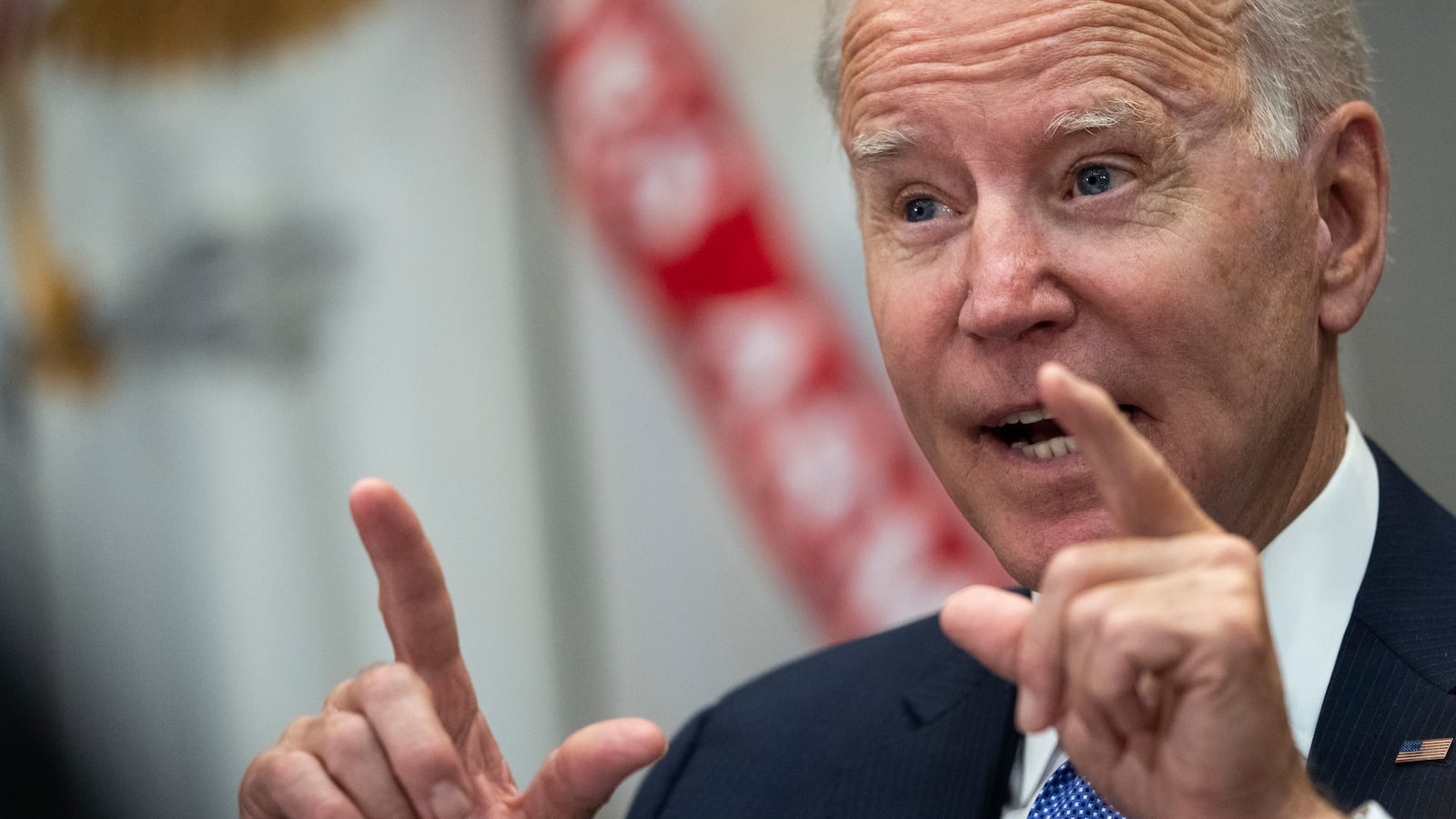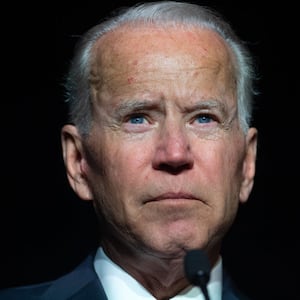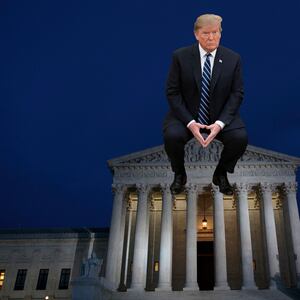In a matter of months, Joe Biden has reminded Americans that their government can work, and be a force for solving, rather than exacerbating, the nation’s gravest problems. That has set off alarm bells in the Republican Party, which has devoted decades to sowing division and seeking to discredit, and destroy, the nation’s government from within, culminating in Trump’s frontal attack on democracy itself.
As Biden confronts continued efforts by GOP “leaders” to make government fail, the strategies of two other presidents who led the nation at times of crisis, FDR and LBJ, offer lessons JRB should use for how a president can make reactionaries fail.
Those presidents learned that it is essential to use the full power of the executive branch to vindicate the rights of Americans, in the face of efforts by reactionaries to undermine them. Biden is well aware of the strategies his predecessors employed to protect citizens’ fundamental rights, and is ready and willing to employ them himself. That’s reflected in the announcement that Biden’s administration will back up state education officials who are standing against GOP governors’ wildly irresponsible efforts to place vulnerable children and other citizens at risk during the pandemic.
It’s an approach as old as the modern era of governance itself. FDR took office in 1933 after voters rejected the stewardship of Herbert Hoover, a Republican “free marketeer” who’d failed a nation in the grips of the Great Depression by opposing direct federal involvement to relieve suffering during the greatest domestic cataclysm since the Civil War.
During his first 100 days in office, Roosevelt not only directly intervened, but—through his New Deal programs—commenced a transformation of the role of the federal government in the economy and the everyday lives of Americans that was radical at the time, but came to be taken for granted thereafter.
FDR faced strong opposition, not only from conservative politicians, but also from a right-wing majority of justices on the Supreme Court that reflected the opposition to his program among the most powerful economic and political institutions in the country. The court soon made clear its intention to try to cut the foundation out from under the New Deal, despite its overwhelming popularity, by declaring much of it unconstitutional.

President Franklin Delano Roosevelt with his grandsons Franklin Roosevelt III (L) and John Boettiger on Jan. 10, 1940.
France Presse Voir/AFP via GettyBut FDR refused to back down on his audacious program to remake the federal government, and made it plain to voters that the Supreme Court was taking dictatorial powers for itself. While FDR’s unfairly reviled “court packing” failed, he ultimately prevailed, after making several of his own appointments, to make it plain to the remaining reactionary justices that it was not politically tenable for the court to stand in the way of the will of the voters during a time of national crisis.
But opposition to the transformation in the role of the federal government wrought by the New Deal never entirely ceased; and in recent years well-heeled interests have spent millions of dollars as part of a sophisticated scheme to pack the courts and employ them as a tool to dismantle what they call “administrative state,” just as the court attempted to when FDR first began to establish it.
In the 1960s, another president, LBJ, marshaled the authority of the federal government, this time to finally begin affording civil rights to Black Americans, as had been promised to them at the end of the Civil War.
Like FDR, Johnson faced entrenched opposition, most notably from Southern segregationists, many of whom had been his colleagues, and mentors, in the Senate. In the wake of the 1954 Brown v. Board of Education decision, Southern white leaders implemented a strategy of what they called “massive resistance” to desegregation and other civil-rights measures.
Sometimes the resistance took the form of theatrical displays, such as Governor George Wallace standing in front of the entrance to the University of Alabama to prevent Black students from enrolling, after JFK sent the Department of Justice and National Guard to enforce a desegregation order, In other cases, the resistance took the form of terror and murder, particularly in response to efforts by courageous Black citizens to register to vote.

President Lyndon Johnson shakes hands with Dr. Martin Luther King Jr. on July 3, 1964, in Washington D.C., after handing him a pen during the ceremonies for the signing of the civil rights bill at the White House.
AFP via GettyJohnson, however, was able to marshal repugnance at some of the ugliest acts of such “resistance” to enact his program. For example, the Voting Rights Act passed in the wake of the attack by police and their dogs upon civil rights activists, including John Lewis, on a bridge in Selma, Alabama.
LBJ also leveraged some of the bounty of his vast new Great Society programs to chip away at segregation and inequality. For example, he successfully pressured Southern hospitals to desegregate by threatening to deny them funding under the then new Medicare program.
But the opposition to affording constitutionally guaranteed civil rights, and particularly the right to fully participate in democracy, to Black Americans has never come close to abating in the South, or elsewhere in the United States. And since at least the presidency of Ronald Reagan, opposition to civil rights protections—if not outright antagonism to the very concept of equal citizenship—has become a central theme for the Republican Party, which absorbed much of what had been the southern, white Democratic Party in the years following LBJ’s presidency.
The Trump presidency took that long-standing reactionary project to an entirely different level, as a Republican president and his party sought to directly undermine the nation’s democratic institutions.
Aided by a reactionary Supreme Court majority created by Reagan and both Bushes, and preserved and increased by Mitch McConnell’s own audacious court-packing scheme, Trump undertook the most concerted effort ever seen to undermine the reviled “administrative state,” in areas from environmental protection and antitrust to organized labor protections (and, of course, civil rights), while Trump himself engaged in the most overtly racist political appeals seen on a national level since George Wallace ran for president in 1968.
But it would take the combined events of a national health emergency and the 2020 election to demonstrate how far Trump and his GOP allies—in Congress and the states—were willing to go in their efforts to undue the nation’s governmental institutions as we have long known them, an offensive against our democracy that accelerated during a national emergency
Like FDR and Hoover, Trump was faced with a once-in-a-century cataclysm, the COVID pandemic. Under the template set in the ’30s, a “normal” president of either party would have been expected to exercise federal power and authority to lead a coordinated government response to such a national emergency.
Indeed, given the nature of the virus and its rapid movement across the nation, and the world, it should have been obvious from the start that only an effort planned, led, and largely carried out, by the federal government could have had any prospect of mitigating, let alone controlling, the outbreak.
Trump, however, had an entirely different, and disastrous, idea, motivated by his own desire to avoid responsibility and sow division—and bolstered by the goal of the right-wing ideologues with whom Trump had made an alliance of convenience to undermine and discredit federal government institutions.
From the outset of the pandemic, Trump declared that his “response” would be governed by principles of federalism. Instead of taking the lead in responding to a fast-moving national catastrophe, the federal government would play only a “supporting” role. From Trump’s twisted view of the situation, this approach offered the political benefits of giving him away to escape responsibly for a national disaster while foisting it on the shoulders of under-resourced governors.
As an added benefit, most of the states hit hardest at the outset of the pandemic were governed by Democrats. Trump and many of his advisors, including son-in-law and consigliere Jared Kushner, initially believed (against all evidence) that the outbreak would largely be confined to heavily populated “blue” states (including Trump’s and Kushner’s home states of New York and New Jersey, respectively), which Trump did not care about, since they were not going to vote his way in the upcoming election.
But by the late spring of 2020, the virus was rapidly engulfing the entire country and many “red” states were being hit hard, Trump responded with a new approach to the situation: Fomenting a new, slow-motion, civil war, within and among the states.
As the crisis grew, Trump not only continued to abdicate responsibility, but also began to aggressively oppose essential public-health measures. Trump began pressuring GOP governors to “open up” their states, despite the fact that the virus has not been mitigated, let alone contained. He also began to urge his supporters in states governed by Democratic governors to attack their local leaders for trying to mitigate the spread of the virus.
Trump’s campaign to “liberate” states such as Michigan, Wisconsin and Virginia typically involved flag-waving, gun-toting militia types, many of whom also later converged on Washington after Trump lost the election.
By the end of his presidency, Trump had so fully identified himself with anti-government conspiracizers, who virulently opposed most all public health measures, that Trump felt compelled to get vaccinated in secret.
Trump’s determined effort to avoid responsibility for—and even undermine—rational responses to the pandemic did not, however, turn out to be the smart political move he hoped it would be. As polls confirmed, Biden was decisively elected president in large part because of his promise to take responsibility for the pandemic, and lead the nation out of it. Yet the GOP’s attack on effective government institutions, and indeed on rationality itself, was not about to end.
While Trump’s post-election effort to foment a coup, and failing that, a violent takeover of the government failed, it also soon became clear that neither Trump nor the GOP were going to let an electoral loss put terminate their decades-long efforts to return the county to its pre-New Deal and Great Society state of affairs, whether most Americans liked it or not.
At the outset of his presidency, Biden gained well-deserved credit with the public for completing the manufacture and effective distribution of the vaccines, thereby ensuring that those Americans who chose to take advantage of the opportunity could avoid death, and likely serious illness.
That, together with his early package of the coronavirus relief bill, which was calibrated to provide much needed financial assistance to working and needy Americans demonstrated something that Trump and the GOP had quite deliberately sought to make them forget: that the federal government can function effectively, and provide desperately needed assistance at times of greatest need.
But it was inevitable that the prospect of a successful Biden presidency would be enough to engender a reaction from the GOP’s remaining, and quite substantial, power centers, including the courts and GOP governors. And that counterattack is rapidly poised to move into full gear, in the courts and in the states.
Last year, the Supreme Court’s new right-wing supermajority began showing its ambition to use the pandemic as an occasion to further its attack on effective government institutions.
Given that Trump was an ally of the court’s agenda, while he was president the justices focused their fire on Democratic officeholders at the state level, issuing a series of ever more audacious challenges to the power of state and local leaders to implement mitigation measures in response to the pandemic, often measures that fully accorded with the federal government’s own guidelines, as issued by the Centers for Disease Control and Prevention.
Virtually all of the cases that initially came before the court concerned, in some respects, issues of religious freedom and typically involved regulations that touched upon worship services. But as the litigation proceeded, it became clear that some on the court were interested in imposing broader, putatively constitutional, limits on states’ ability to protect their citizens from a deadly pandemic.
Once Biden took office, the stage was set for the gloves to come off, and justices are plainly itching to get into a confrontation with the newly installed Democratic president in order to rein him in, much as their predecessors did FDR, at least for a time.
The first hint of the battles to come came several weeks ago when the court was asked by a group of landlords to impose a stay that would have effectively voided a nationwide moratorium on certain residential evictions the CDC had imposed pursuant to its extremely broad statutory authority to address health emergencies.
By a narrow majority, the Supreme Court rejected the stay motion, but one member of the majority, Trump appointee Brett Kavanaugh, cautioned that he was denying the stay only because the moratorium was about to expire under its own terms while unmistakably indicating that he would be inclined to rule in the landlords’ favor if the moratorium was extended.
For weeks, the Biden administration took no action, and—on the eve of the expiration of the moratorium—the president announced that he did not believe that he had the power to grant an extension.
In the face of pressure from Congress, however, the CDC imposed a new moratorium, this time limited to regions hard hit by the pandemic. Media reports indicated that the administration solicited legal advice and concluded that—while a majority of the court’s right-wing supermajority could well disagree—there is a strong argument that the president does have the authority to protect needy tenants from being thrown out in the streets in the midst of a national health emergency of historic scale.
Plainly, that was the right decision, and should serve as the model for Biden’s response, as he inevitably finds himself and his policy priorities at odds with the reactionaries who currently control the Supreme Court.
Like Roosevelt, Biden should not shy away from confrontations with a reactionary court majority that is determined to frustrate his efforts to marshal the power of the federal government to help Americans at a time of great challenge. As Democratic presidents have done before, Biden should go forward with programs and actions that he believes are constitutional and otherwise legally sound, recognizing that the court might rule against him.
And, like FDR, when Biden loses, he should make it clear in the court of public opinion that the Supreme Court is claiming for itself policy-making authority that properly belongs to the elected branches of the government.
In this regard, it is important to remember that FDR ultimately prevailed in his tug of war with the court, including by making it politically untenable for right-wing justices to countermand the policy judgements of the voters’ elected representatives, particularly during a time of national crisis. Biden should do the same, and—if, as can be expected—the Roberts court oversteps its bounds, the argument for reforming the judicial body will only become more compelling.
Biden’s other immediate challenge comes from the red-state governors determined to expose their citizens to the ravages of the pandemic, and abandoning all conservative principles to stop local governments from making more responsible decisions.
Matters are coming to a head as Republican governors, particularly Texas’ Greg Abbott and Florida’s Ron DeSantis, compete in a morbid race to the bottom with each endeavoring to be as irresponsible as possible, particularly toward their states’ children.
These governors are not only at odds with medical science, as reflected in CDC guidelines, but also with the views of the parents whose votes they rely upon. Thus, school boards in Texas and Florida have, at the behest of the parents they serve, begun defying their governors’ edicts, demanding that they place the children under their charge at needless risk of being infected with a potentially deadly pathogen.
DeSantis, among others, has threatened to partially defund school boards that have the temerity to defy his pro-COVID policies.
Biden’s response has been to tell these governors to “get out of the way” and to indicate that he is looking at ways to directly aid the rebellious school boards attempting to protect the students under their charge, including by making up for aid DeSantis has threatened to cut.
DeSantis responded by “warning” Biden to stay out of his state. The parallel to Wallace’s threat to block Black students’ access to higher education was striking. The Biden administration, in turn, responded with a warning to DeSantis, reflected in a letter from Secretary of Education Miguel Cardona to Florida school superintendents, stating that the “U.S. Department of Education stands with them in their efforts to protect students, including by requiring the use of masks to protect students, in accordance with CDC guidelines.”
Cardona also stated that he was writing to DeSantis and his education commissioner to “remind them of their responsibility to protect the health and safety of Florida students,” and that federal emergency COVID relief funds would be made available to local districts to make up for any monies Florida’s government attempted to deny local school districts as a penalty for protecting the health and safety of their students.
In response, DeSantis’s handpicked state school board is doubling down on the governor’s threats. During a recent board hearing, Alachua County Superintendent Dr. Carlee Simon informed the board that parents who have tested positive are sending their children to school; and thousands of children in Florida are already in quarantine, due to virus exposure. The board members, however, refused even to consider these facts, and voted to penalize Alachua and Broward Counties’ school systems for having the temerity of attempting to protect the children under their charge, an effort the state board declared to be “unlawful.”
Other GOP governors are following DeSantis’s nihilistic lead. Arizona Governor Doug Ducey audaciously announced that he will attempt to withhold federal funds from local schools that insist on following federal public health guidelines. By thumbing his nose at the federal government—and at his own state’s students—Ducey effectively dared Biden’s Education Department to intervene in Arizona as it has in Florida.
Meanwhile, Texas’s Abbott successfully petitioned Texas’s right-wing supreme court to uphold his irrational decree purporting to make compliance with federal public health guidance illegal. For his own part. Texas’s Abbott reportedly secretly jumped to the head of the line to obtain a third (federally funded) vaccine dose before it was approved by the FDA, and—after participating in a “standing room only” superspreader event—announced that he had a breakthrough infection, and was availing himself of an (also federally funded) dose of monoclonal antibodies. Thus, even as he has armed himself with every possible protection from serious illness that the United State government can supply, Abbott continues to demand that his state’s public school students (the youngest of them entirely unvaccinated) attend schools without mask mandates, the only protection against deadly illness available to many of them.
In further response, on Aug. 18, Biden stated: “We are not going to sit by as governors try to block and intimidate educators protecting our children,” and announced that the federal government may also take legal action directly against state governments that insist on placing students at risk.
The Biden administration’s unequivocal declaration that it will support students, teachers and administrators who find themselves in the sites of irresponsible governors should be a model for how he proceeds in using the power and resources of the federal government to push back against the irresponsible forces of reaction.
Indeed, Biden has already announced additional such steps. Also on Aug. 18, the president stated that he will be making the vaccination of all personnel a condition for nursing homes to receive Medicare and Medicaid funding; this comes after states like Mississippi are continuing to suffer nursing home outbreaks many months after vaccines were made available to seniors and those who care for them. The administration can, and should, consider using the power of the federal purse, and particularly the U.S, government’s large fiscal footprint in the areas of health-care and coronavirus relief funding, to further pressure states, as well as private sector institutions, to protect, not harm, Americans in the midst of a resurgent pandemic.
Of course, if the president continues to employ federal power aggressively to protect the rights of citizens, he is certain to face pushback, including from GOP politicians and the judges they have installed in the courts. Accordingly, not every intervention will succeed. But the possibility of failure alone should not be a reason not to try. As Professor Laurence Tribe recently told Greg Sargent regarding the efforts of GOP state officials to risk the health of their own citizens: “It would be a mistake for federal authorities to treat the power of state governors and legislatures as absolutely impervious to penetration”.
Furthermore, Biden is not only on the side of public health, but also of the public. As polling data increasingly confirms, citizens are tiring of the GOP’s single-minded advocacy on behalf of the virus, and that many support masking, as well as placing pressure on the unvaccinated to become inoculated against the virus.
As the experiences of FDR and LBJ remind us, the only way that a president can demonstrate the power of the federal government to protect the nation’s citizens at a time of crisis is to exercise that power with all available force, while recognizing that opposition from forces of reaction is not only inevitable, but can even be politically productive.







